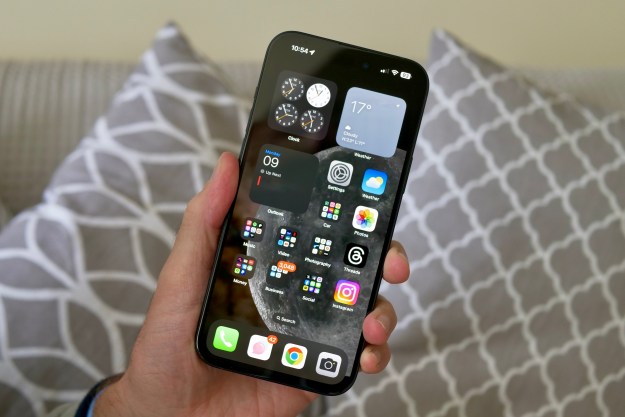Apple forgot to mention one important detail about iOS 16 at its annual WWDC conference yesterday: iPhone users will be able to play games with their Nintendo Switch Pro and Joy-Con controllers.
iOS 16 won’t be released to everyone’s iPhones until fall, but it is currently out as a developer preview, giving devs ample opportunities to test out and discover some of the new operating system’s quirks and exploits. Riley Testut, the developer behind the Delta emulator and AltStore, shared his discovery of iOS 16 natively supporting the Nintendo Switch Pro and Joy-Con controllers, although they show up as a single device. He reported that “they work perfectly with Delta,” which emulates games from SNES, Nintendo 64, Game Boy Color, and Game Boy Advance.
!!! iOS 16 natively supports Nintendo Switch Pro Controllers!!
Can confirm they work perfectly with Delta 😍 pic.twitter.com/p8u1sdjvTt
— Riles 🤷♂️ (@rileytestut) June 6, 2022
Nat Brown, an engineering manager at Apple, went on to confirm that iOS 16 supports both the Switch Pro Controller and the Joy-Cons, in a response to a fellow iOS developer who managed to get the Pro Controller working but not the Joy-Cons. He said when both Joy-Cons are paired, they can be joined as a single controller by holding the screenshot and home buttons at the same time for a few seconds. The same method applies to splitting them into two separate controllers.
Last May, Apple added support for the PS5 DualSense controller, making it compatible with the Remote Play app following the 4.0.0 update. Coincidentally, the company also threw in support for the Xbox Series X controller along with the DualSense controller to go with the iOS 14.5 update. iOS 16 will be released this fall.
Editors' Recommendations
- The best iPhone emulators
- Here’s how Apple could change your iPhone forever
- Why you should buy the iPhone 15 Pro Max instead of the iPhone 15 Pro
- When will Apple release iOS 18? Here’s what we know
- iPhone 16: news, rumored price, release date, and more




